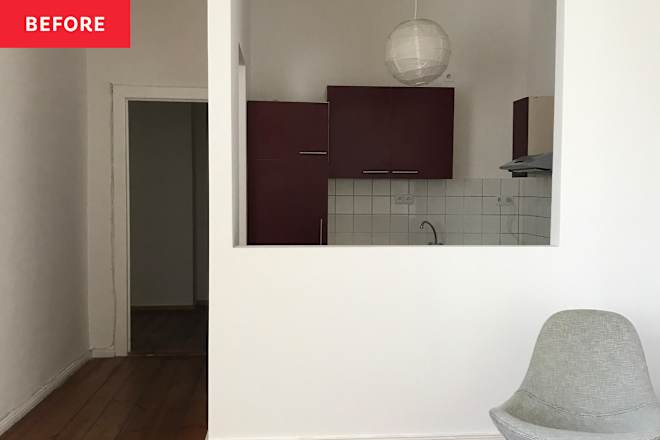What Skincare Routine is Best for Preventing Hyperpigmentation in Asian Skin?
Hyperpigmentation refers to the darkening of patches or spots on the skin due to an overproduction of melanin, the pigment responsible for skin color.

Understanding Hyperpigmentation in Asian Skin
asian hyperpigmentation refers to the darkening of patches or spots on the skin due to an overproduction of melanin, the pigment responsible for skin color. While it can happen to anyone, Asian skin tends to be more reactive to external and internal triggers, leading to more visible and persistent pigmentation issues.
This type of skin concern doesn’t only affect appearance—it impacts confidence, too. Whether triggered by sun exposure, inflammation, hormonal changes, or skin injuries, hyperpigmentation can be frustrating to manage. But with the right skincare routine tailored to Asian skin's unique structure and sensitivity, it's possible to prevent and reduce these dark spots effectively.
Why Asian Skin is More Prone to Dark Spots
Asian skin tends to produce more melanin than lighter skin tones, which makes it naturally more vulnerable to pigmentation issues. Additionally, research shows that the dermal structure of Asian skin may be more reactive to inflammation, which means that even small irritations—like acne or insect bites—can leave dark marks for weeks or even months.
Another factor is environmental exposure. Pollution, UV rays, and humidity can all contribute to uneven skin tone. Even products that contain strong acids or fragrance may cause irritation that leads to post-inflammatory hyperpigmentation (PIH).
Moreover, as Asian skin is often slightly more acidic than other skin types, using pH-balanced skincare becomes even more critical. One mistake in your routine could easily cause a setback in your efforts to maintain an even complexion.
The Role of a Consistent Skincare Routine
Consistency is at the heart of any successful skincare journey. Hyperpigmentation doesn’t fade overnight, especially in melanin-rich skin. A thoughtful, daily skincare routine focused on hydration, repair, and protection is key to prevention.
The routine should work with your skin's natural healing cycle, which typically spans about 28 days. With consistent care, your skin becomes more resilient, less reactive, and gradually more even-toned. Missing steps or frequently switching products can interrupt progress, leading to new flare-ups and stubborn spots.
Sticking to a routine doesn’t mean using more products—it means using the right ones, at the right time, and in the right way. From the gentle morning cleanse to the protective barrier at night, every step should have a purpose tailored to keeping your skin calm and clear.
Ingredients that Support Bright and Even-Toned Skin
Choosing skincare products is about more than just what's trending—especially when hyperpigmentation is a concern. Certain ingredients are particularly helpful for Asian skin due to their ability to suppress melanin production, promote cell turnover, and reduce inflammation without being too harsh.
One such ingredient is niacinamide, a form of vitamin B3 known for its ability to brighten skin and reduce dark spots while strengthening the skin’s barrier. Vitamin C, especially in stable forms like ascorbyl glucoside or magnesium ascorbyl phosphate, helps fade existing pigmentation and provides antioxidant protection.
Other helpful ingredients include azelaic acid, arbutin, licorice root extract, and tranexamic acid—all of which target pigmentation at various stages of its formation. These ingredients are often better tolerated by Asian skin than stronger actives like high-dose hydroquinone or retinoids, which can sometimes irritate sensitive complexions.
Morning Routine Explained
Starting the day with a clean and hydrated base is essential. A gentle, non-stripping cleanser helps remove overnight sweat and excess oil without disrupting the skin’s barrier. Follow this with a lightweight toner or essence that calms and hydrates the skin, preparing it to absorb the next products more effectively.
A good serum should follow, ideally one that contains antioxidants like vitamin C or niacinamide. These ingredients not only brighten but also shield the skin from oxidative stress throughout the day. If your skin leans dry, a moisturizer with soothing elements like hyaluronic acid or centella asiatica can help maintain moisture balance.
No morning routine is complete without sunscreen. It’s the most powerful step in preventing hyperpigmentation. Look for broad-spectrum SPF 30 or higher, and choose formulas designed for sensitive or acne-prone skin to avoid irritation. Sunscreen should be the final step before makeup or stepping out into the world.
Evening Routine Explained
The nighttime is when your skin does its best healing, so your evening routine should focus on cleansing, repairing, and restoring. A gentle double cleanse is effective for removing sunscreen, makeup, and pollutants. Start with an oil-based cleanser, then follow with a water-based one.
After cleansing, you may introduce more active ingredients—though gently. Products containing low-percentage acids like lactic acid or mandelic acid can help with gentle exfoliation, promoting cell turnover and preventing pigment from accumulating. However, these should be used only a few times a week.
Your nighttime serum can focus on calming inflammation and brightening. Ingredients like arbutin, licorice root, and peptides support skin recovery. Lock everything in with a moisturizer that supports the skin barrier—preferably one with ceramides or panthenol.
The Importance of Sun Protection
Sun exposure is one of the leading causes of hyperpigmentation. Even if you’re using the best serums or exfoliators, skipping sunscreen can reverse all your hard work. UV rays stimulate melanin production, deepening existing pigmentation and causing new spots to form.
Asian skin, due to its increased melanin activity, reacts quickly to sunlight—even short bursts of exposure during a walk or through a car window can have lasting effects. That’s why reapplying sunscreen every 2 to 3 hours is just as important as applying it in the first place.
Some people assume they don’t need sunscreen on cloudy days or while indoors. However, UVA rays—those primarily responsible for aging and pigmentation—can penetrate glass and clouds. Incorporating SPF into your daily skincare habit is non-negotiable if your goal is even-toned skin.
Lifestyle Choices That Make a Difference
While skincare plays a massive role, lifestyle choices can support or sabotage your efforts. A diet high in antioxidants—such as leafy greens, berries, and omega-3-rich fish—can support skin health from within. Staying hydrated and getting enough sleep also promotes a healthy complexion.
Managing stress is another often overlooked factor. Chronic stress can increase cortisol levels, which may lead to inflammation and pigmentation flare-ups. Simple practices like yoga, meditation, or a short evening walk can work wonders for your mental and skin health.
It’s also worth mentioning the importance of avoiding harsh treatments or picking at your skin. Every time you squeeze a pimple or scratch at a spot, you risk triggering post-inflammatory hyperpigmentation, which can last much longer than the original concern.
How Long Before You See Results?
When dealing with hyperpigmentation, patience is key. While some improvements can be noticed within a few weeks, especially with diligent sunscreen use and brightening ingredients, significant fading often takes 8 to 12 weeks or more.
The exact timeline depends on several factors: the cause of the pigmentation, your skin's natural renewal cycle, the strength of the products you're using, and—most importantly—how consistently you follow your routine.
It’s common to feel discouraged if results aren’t instant, but consistency will always pay off. Taking photos every few weeks can help you notice gradual improvements that might not be obvious day-to-day.
Common Mistakes to Avoid
One of the biggest mistakes people make is using too many products too quickly. Layering multiple active ingredients without proper guidance can lead to irritation, making pigmentation worse. It’s better to introduce new products one at a time and observe how your skin reacts.
Another common issue is being inconsistent with sunscreen. Skipping even a few days can trigger melanin production and undo weeks of progress. Also, exfoliating too often or too harshly can damage your barrier, causing redness and more dark marks.
Lastly, chasing quick fixes like DIY lemon masks or using unverified products can lead to chemical burns or long-term damage. Always choose gentle, evidence-backed skincare—especially for delicate Asian skin.
Sample Skincare Routine Table
| Time of Day | Step | Product Type | Purpose |
|---|---|---|---|
| Morning | 1 | Gentle Cleanser | Remove overnight oils and prep skin |
| 2 | Hydrating Toner | Replenish moisture, soothe skin | |
| 3 | Antioxidant Serum (Vitamin C or Niacinamide) | Brighten, protect from environmental stress | |
| 4 | Moisturizer | Seal in hydration | |
| 5 | Broad-Spectrum Sunscreen (SPF 30+) | Prevent UV-induced pigmentation | |
| Evening | 1 | Oil Cleanser | Remove sunscreen and makeup |
| 2 | Water-Based Cleanser | Clean leftover debris | |
| 3 | Exfoliating Serum (2-3x/week) | Promote cell turnover | |
| 4 | Brightening Serum (Arbutin, Licorice) | Fade dark spots and calm skin | |
| 5 | Night Cream or Moisturizer | Restore and support skin barrier |
Final Thoughts
Preventing hyperpigmentation in Asian skin requires a blend of science, care, and discipline. From choosing the right ingredients to sticking with a routine and protecting your skin from the sun, each step matters.
The goal isn’t to change your natural skin tone but to nurture a healthy, even glow that reflects balance from the inside out. By being gentle, consistent, and thoughtful with your skincare choices, you can enjoy a clearer complexion and more confidence—every day.
Hyperpigmentation might be stubborn, but with the right routine, your skin has the power to heal, brighten, and thrive.
















































































